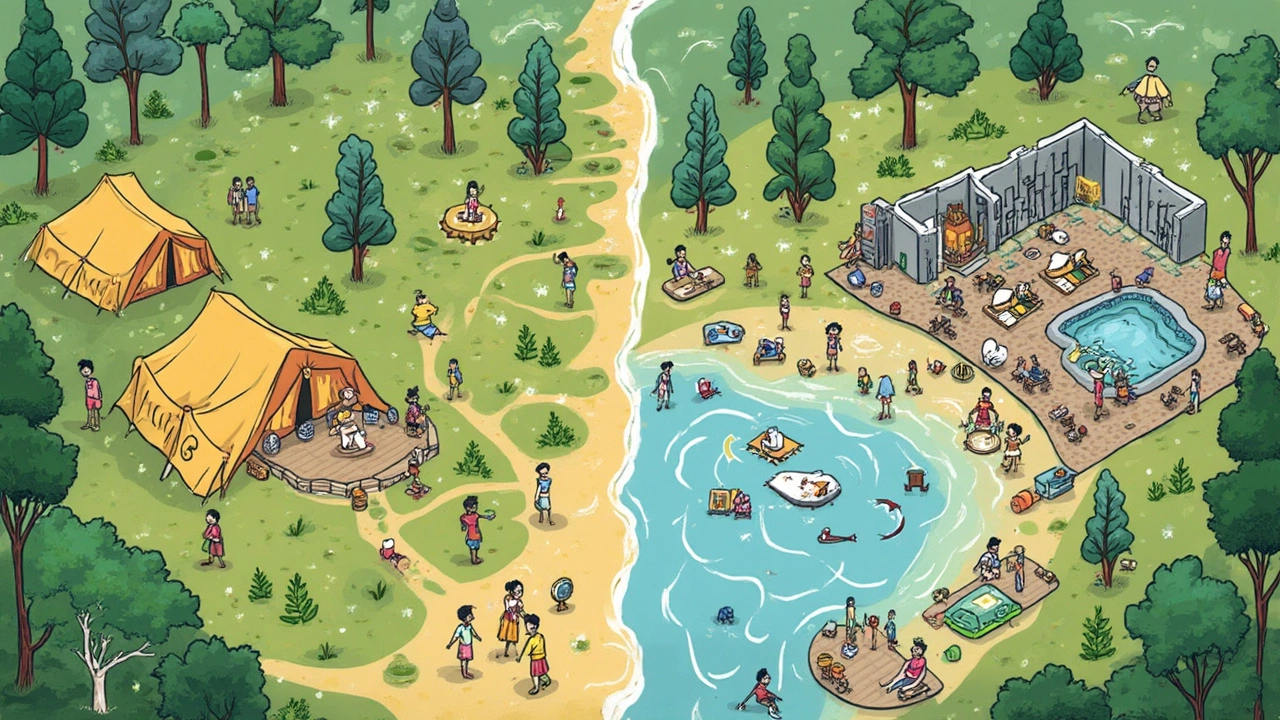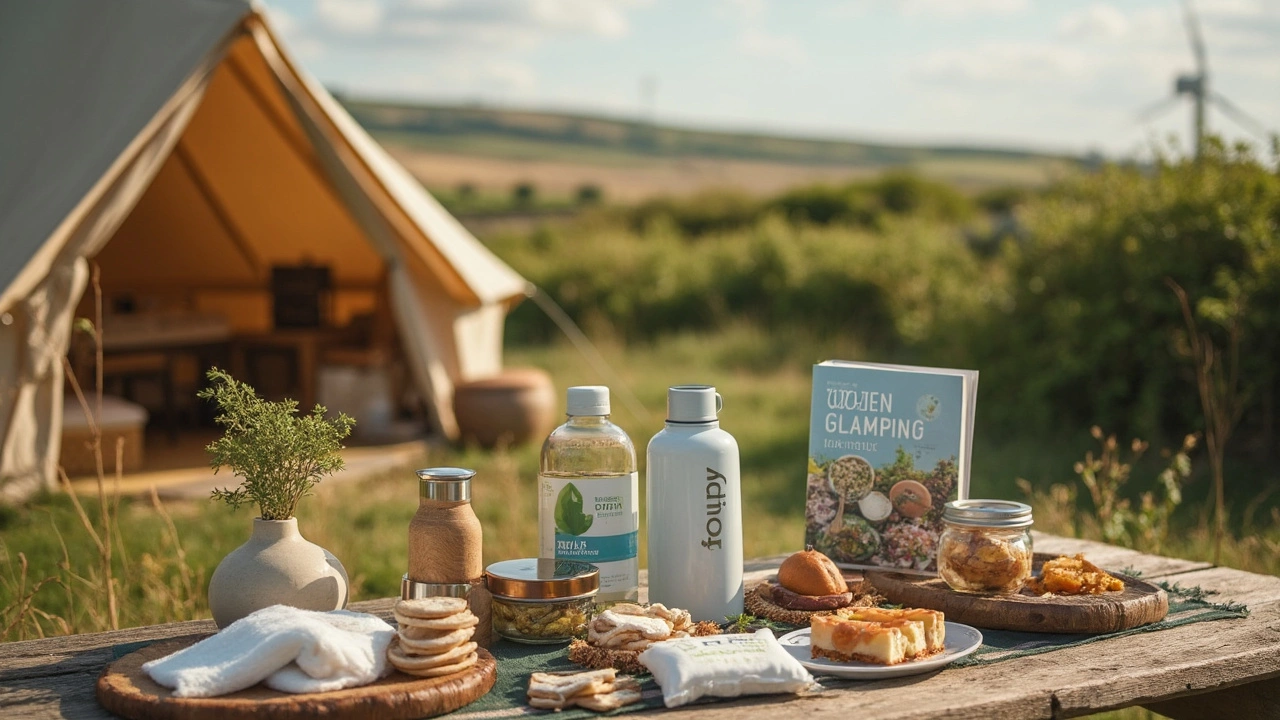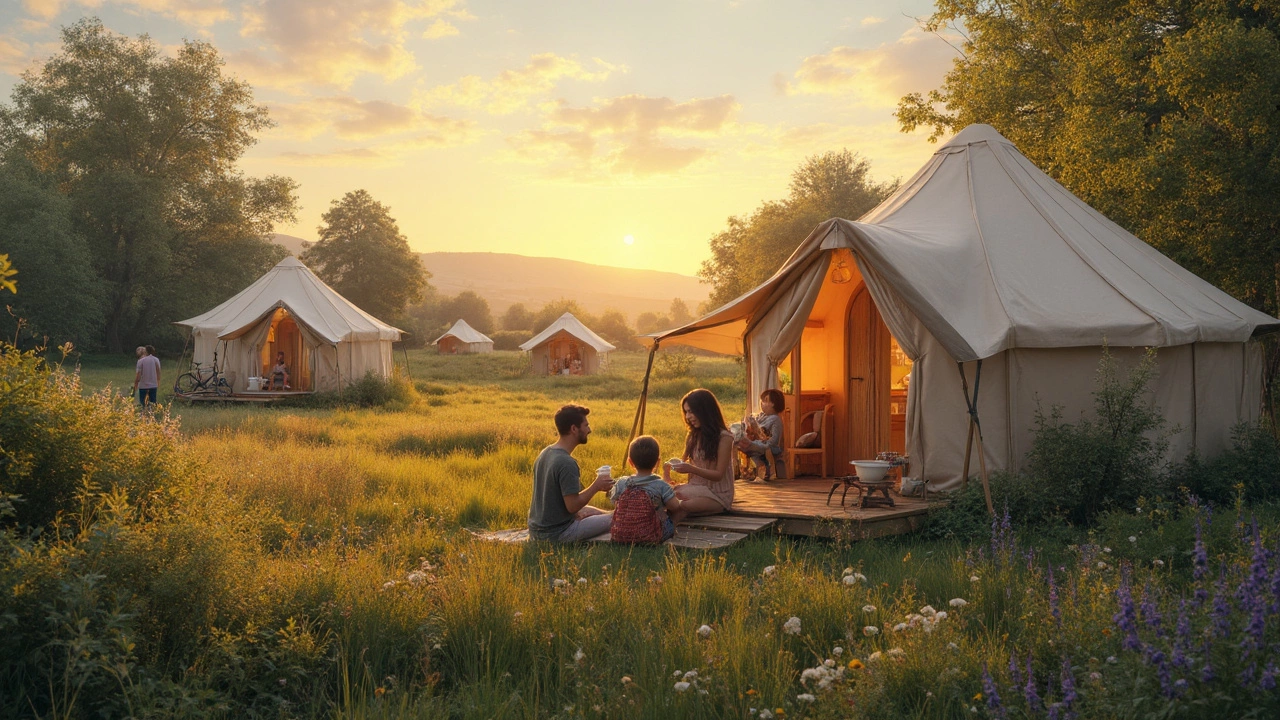Glamping sounds almost too good to be true. Proper beds, fluffy duvets under the stars, hot showers just a zip away, and fancy breakfasts without a soggy tent pole in sight. But as more people search for ways to travel green without roughing it, eco-friendly glamping is stealing the spotlight. Can a comfy night in a safari tent or a tipi really be green, though? Some argue that all this luxury can’t possibly be good for the planet. Others see it as a solution to travel's nasty habit of leaving deep footprints, both literal and metaphorical. So let’s peel back the canvas and see what’s really going on.
How Glamping Reduces the Environmental Impact of Travel
At first, glamping might look like camping’s bougie cousin, but there’s more to it. While sprawling hotels or cruise ships gobble up resources, glamping leans on something else—the land itself. Most glamping sites pop up in existing natural areas, from rolling farmland to bush-clad hills. I once stayed in a treehouse here north of Auckland and remember the owner explaining how they built the deck around the old pohutukawa tree instead of cutting it down, even if it meant an awkward jog in the floorboards. That’s common in eco-conscious glamping. They use what’s already there, and avoid massive development that bulldozes everything in its path.
Another big tick for the environment is energy. The best glamping sites, especially the posh ones with eco-credentials, tap into off-grid solutions. Solar panels, composting loos, rainwater tanks—you see this all over the place now. Take Canopy Camping Escapes here in New Zealand; they’ve built glamping tents with solar fairy lights and wood-burning stoves, and you collect your own water from rain barrels. Even the showers heat up using solar or a quick-fire ‘donkey boiler’ (imagine lighting a wood fire under a water tank—pretty old school but zero power needed). If you’ve ever camped with a battery-powered headlamp, you know a little goes a long way when you don’t have electric lighting blasting all night.
Waste, of course, is a huge bugbear in ordinary camping. Lots of plastic, throwaway gear, and people sometimes leave rubbish behind (even if my own Jasper the cat’s more tidy than some campers). Glamping changes the scene with reusable dishes, built-in toilets that compost waste, and actual kitchen bins for sorting recycling. I visited one glamping pod where there was a clear sheet on the fridge explaining what goes where—compost, recycling, landfill—and the host actually checked! This gentle nudge helps guests create much less waste. And since spots are often limited—we’re talking about a handful of tents scattered over acres, not rows of cabins—the strain on nature stays low.
It’s not just the setup, either. Glamping tends to attract a crowd that’s keen on nature and happy to play by the rules. That means using eco-friendly soaps, not trampling wildflowers for the perfect selfie, and leaving places better than they found them. This respect rubs off; the more guests see compost bins and solar chargers and are asked to conserve water, the easier it becomes to carry those habits home. Can you imagine a big chain hotel ever asking you to use compostable toilet paper and shooing you off single-use bottles? Me neither.

Not All Glamping is Green: What to Watch Out For
Of course, the keyword is ‘can be’ eco-friendly—not always ‘is.’ Not every place calling itself a ‘glampground’ cares about the planet. Some chase the trend of glamping with Instagrammable setups—think plastic hot tubs shipped in by diesel trucks, imported furniture from halfway around the world, or generators running all night so glampers can charge their devices and watch Netflix under canvas. If you rock up to a cow paddock where a dozen cabins have just been plopped onto mowed pasture with no trees or wildlife, you’re not really escaping the urban sprawl; you’re just giving it a softer bedspread.
If you want to be sure you’re lowering your footprint, snoop around their website for some key clues. Do they mention solar power or water saving? Are they using locally made furniture and eco-friendly cleaning products, or shipping in cheap stuff from online mega-retailers? Do they have certifications like Toitū Envirocare here in New Zealand, or at least show real evidence of sustainable practices—photos of wildlife corridors, veggie gardens, compost heaps? The best glamping sites brag about what they’re doing to stay green, and they’re happy to answer questions.
Even tiny things add up. For example, are the toiletries provided actually refillable, or are they those single-use plastic minis you find in old-fashioned hotels? Is food sourced from local growers, or wrapped in supermarket plastic? Are the paths around the site made with permeable material, letting water drain naturally, or are they slabs of concrete that change the whole ecosystem beneath?
Let’s talk numbers for a second: a 2023 study out of Otago University looked at side-by-side emissions between a stay at conventional hotels versus glamping-style eco-accommodation in New Zealand. The eco stays used nearly 75% less electricity per guest per night, generated four times less rubbish, and supported local biodiversity through simple measures—like wildflower meadows around tents that doubled up as pollinator habitats. It’s a real contrast to the concrete jungle model, but only if the glamping operators want it that way.
For the traveler, there’s power in your purse (and your browser). Sites like EcoLuxury and Green Getaways Australia let you filter by how hardcore the eco-features are—from fancy composting toilets to glampsites working to restore wetlands or plant native trees. Reading reviews is just as valuable; look for mentions of recycling, wildlife, or hosts going above and beyond for the environment. If a reviewer gushes about glassy eco-pods with glowing fairy lights but not a peep about nature or sustainable features, it’s a hint things might just be about show.

Tips for Eco-Friendly Glamping Without Compromise
Maybe you’ve already got your heart set on a safari tent near a waterfall, but you still want to sleep easy at night knowing your holiday isn’t trashing the planet. Here’s what works—stuff I’ve picked up from hosts, seasoned glampers, and my own stubborn love of guilt-free comfort. First off, check the green credentials—don’t just take their word for it. Proper eco-certifications, solid sustainability statements, and local partnerships are the real deal. Glamping isn’t just about a tent with a view; it’s about how that tent fits into the bigger picture.
When you’re packing for a trip, swap single-use plastic for reusables. Bring your own water bottle, real coffee mug, and a stash of cloth bags. Many glamping spots provide dishware, but a compact kit never hurts for side trips or picnics. Eco-friendly toiletries (no microbeads, no harsh chemicals, ideally solid or refillable) work wonders for those off-grid showers, and they’re way easier on lakes and streams nearby.
Avoid packaged snacks if you can—opt for fruits, nuts, baked goods from the local market. Not only are they tastier, they usually come with less packaging. If the glampsite offers meals, ask what’s local and in-season; you’ll get fresher food, cut down on food miles, and might even discover wild flavors you’ve never tried before (feijoa pancakes, anyone?).
During your stay, think like a local. Stay on marked trails to protect delicate plants, support wildlife by following the quiet hours, and skip wildfires unless there’s a safe area for them. If you’re using the onsite facilities, don’t let taps or showers run longer than needed. Use compost and recycle bins properly—don’t just toss everything together and hope it sorts itself. Sometimes the on-site tips are gold; at one eco-camp I visited, the hosts left a handwritten booklet of ways to minimize your impact, including how to safely use natural bug repellent (which absolutely saved me from a sandfly invasion—Jasper would have been useless there).
For tech, keep it simple. Portable solar chargers are cheap and handy now, so you won’t run down your device and demand a wall socket. Bring a real book or two (less charging, plus that classic campfire vibe). Stargazing apps work offline, and nothing beats looking up at the Milky Way while snuggled up with thick blankets and a mug of cocoa. Recharge your own batteries instead of your devices.
Thinking long-term, the more we support glampsites doing real sustainability, the more the industry is pushed toward greener practices. That’s how glamping’s not just another travel fad. Some of the greenest places actually help with conservation, turning old farmland back into forests or funding predator control to support native wildlife. Here in New Zealand, places like Tawanui Farm Glamping replant native bush, use sheep wool insulation, and invite guests to join backyard bird surveys. This hands-on touch pulls guests into nature’s rhythms and makes the whole experience memorable—and meaningful.
So, is glamping eco-friendly? When you choose smart, it absolutely can be. Unlike old-school resorts, you control where your dollars go and what your footprint looks like. Next time you’re scrolling through dreamy tent pics online, remember to look beneath that glossy deck and ask what kind of roots it really has. It’s comfort, yes, but with a conscience. And that feels like a true escape.
